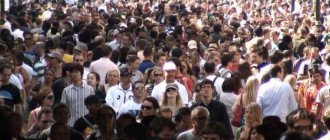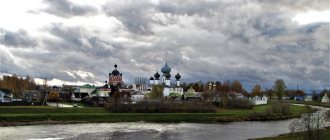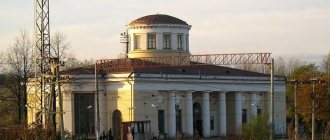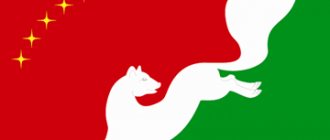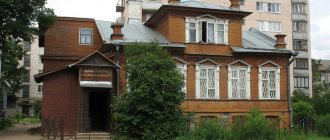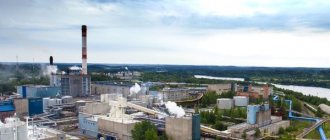| Volosovo City Flag | Coat of arms |
| A country | Russia, Russia |
| Subject of the federation | Leningrad regionLeningrad region |
| Area | Volosovsky |
| Head of Administration | Dmitravtsov, Alexander Petrovich |
| Based | 1870 |
| City with | 1999 |
| Square | 6 km² |
| Center height | 135 |
| Population | 11,437 people (2008) |
| National composition | Russians, Finns and others |
| Timezone | UTC+3, in summer UTC+4 |
| Telephone code | +7 81373 |
| Postcode | 188410 |
| Vehicle code | 47 |
| OKATO code | 41 206 501 |
| Official site | link |
Volosovo
- a city (since 1999) in Russia, the administrative center of the Volosovsky urban settlement and the Volosovsky municipal district of the Leningrad region.
Located in the central part of the region, 72 km southwest of St. Petersburg.
The population in 2007 was 11.5 thousand people, the largest settlement in the Volosovsky municipal district.
The main street of the city is Vingissara Avenue
Story
The name is found in Novgorod scribe books of the 16th century. On the maps of the Ingria province of 1705 there is a settlement of Volosovo.
In 1870, the St. Petersburg - Revel railway was built, on which the Volosovo station appeared. By the end of the 19th century, the settlement turned into a holiday village.
In September 1927 it became the administrative center of the Volosovsky district. In 1937 it received the status of an urban-type settlement.
During the Great Patriotic War it was occupied. Restored after the war. From 1963 to 1965 it was part of the Kingisepp rural district.
On March 30, 1999, the Legislative Assembly of the Leningrad Region adopted regional law No. 28-oz “On classifying the urban settlement of Volosovo, Volosovsky District, as a city of regional subordination.” On April 14, 1999, it was signed by the acting governor of the Leningrad region Valery Pavlovich Serdyukov. On April 20, 1999, the law was published in No. 43 of the Vesti newspaper and came into force. So Volosovo received the status of a city.
On January 1, 2006, the municipal formation “Volosovo urban settlement” was formed, the city of Volosovo became its administrative center.
Population and administrative structure
The population is 52 thousand people, of which only 23% live in urban areas (in a single city). It is curious that the historical maximum population in the Volosovsky district was recorded in 2022. The population has been growing since 2009, with a small increase recorded almost every year. The district accounts for 2.9% of the population of the entire Leningrad region (15th place). The national composition is 90% Russian, 2.4% Ukrainian, 1.7% Belarusian and about 1% Finnish.
There are only 202 settlements in the Volosovsky district. There is only one city - Volosovo, which forms the Volosovskoe rural settlement, which also includes the village of Lagonovo. The remaining 200 settlements are divided into 15 rural settlements.
Table and list of rural settlements in the Volosovsky district.
| Name | Center | Population | Settlements included |
| Begunitskoye | Begunitsy village | 4950 | 22 |
| Besedskoye | Beseda village | 1370 | 12 |
| Bolshevrudskoe | Village of Bolshaya Vruda | 4050 | 24 |
| Gubanitskoye | Gubanitsa village | 4000 | 14 |
| Zimititskoe | Zimititsy village | 1700 | 12 |
| Izvarskoe | Village of Izvara | 3400 | 11 |
| Kalitinskoe | Kalitino village | 3900 | 15 |
| Kalozhitskoye | Kalozhitsy village | 1750 | 10 |
| Kikerinskoe | Kikerino village | 2450 | 9 |
| Klopitsky | Village of Klopitsa | 1720 | 8 |
| Kursk | Kursk village | 2500 | 13 |
| Rabititskoye | Village Rabititsa | 1700 | 5 |
| Sabskoe | Village of Bolshoi Sabsk | 1800 | 20 |
| Seltsovskoe | Seltso village | 2500 | 12 |
| Terpilitskoe | Terpilitsy village | 1700 | 13 |
Approximately 25 settlements have fewer than ten people living in them or no one lives there permanently. In general, in the Volosovsky district, about 40 thousand people live in 200 towns or villages.
Volosovskoe urban settlement
Symbolism
Coat of arms of the city of Volosovo
Heraldic description of the COAT OF ARMS
“In a green field, sitting upright on a golden damask throne, an old man in long ancient Russian clothes, holding a harp on his knees, on which his right hand is laid, and in his left hand - a staff. From behind the throne, on the sides, a bull emerges to the right and a bear to the left. All the figures are gold."
Rationale for the symbolism of the COAT OF ARMS
The golden figure of an old man symbolizes the centuries-old, more than 500-year history of Volosovo - first as a village, then in the 20th century. – a workers’ village, the center of a large district of the Leningrad region (since 1927), and since 1999 – a city. The first mention of Volosovo dates back to 1499. For many centuries, Volosovo was a small village located among forests (the green color of the field, the symbol of the bear), which received its development only in the second half of the 19th century. The gusli on the elder’s lap is a symbol of the rich spiritual culture of the region, the development of folk art in Volosovo. Holidays and festivals at the district and regional level are held on Volosovskaya land - the holiday of folk art (since 1987), the regional holiday of Slavic cultures “Slavic Ring”. The city has a city leisure center with a large concert hall, a library, a local history museum, and the Volosov Art School named after. N.K. Roerich, Veles Culture and Leisure Park. Particular attention is paid to the development of folk arts and crafts. There is a Russian folk choir. The bear symbolizes Volosovo as the center of the forest region, and the bull symbolizes the center of the agricultural region.
An ancient legend says: in the place between the villages of Kandakul and Seltso, the ancient Slavs worshiped their pagan god Veles (Volos), the patron saint of cattle breeding. Volosovo gets its name from his name. The symbol of an old man sitting on a throne with a bear and a bull coming out from behind him symbolizes the image of Veles (Volos) - the ancient Slavic god of fertility, the “cattle god”. The Old Russian cult of Veles is associated with the veneration of the bear as the owner of animals. According to Rybakov, Veles is the spirit of a killed bear that had to be appeased. The bear is the “king of the forest”, to whom requests were made for the safety of all livestock. Rybakov writes that “Veles” could act both in the form of a bear, the “king of the forest,” and in the form of a bull, a representative of “horned wealth.” The bear is a symbol of forethought, and the bull is a symbol of fertility and prosperity.
The gusli symbolizes the mention in “The Lay of Igor’s Campaign” of Boyan as the grandson of Veles.
Greenery is the traditional color of nature, its rebirth every spring, symbolizing hope, abundance, health, freedom and joy. Symbol of forest wealth and agricultural land.
Gold – spiritual greatness, power, strength, constancy, justice, virtue, loyalty.
Anthem of the city of Volosovo
Veles, Volos, Blasius are deities, our city originates from you. Volosovo - an ancient kinship with the bonds of fate married us.
The city is a park... Here we love and grow, We fill our hearts with beauty. Here we live as a friendly family, we cleanse our souls with kindness.
My glorious Volosovo, You are dearer than everyone else, closer and dearer. We carry your name in our hearts, Because you love us too.
Be eternal, young city, be famous for your nobility and deeds. My dear corner of Russia, We are with you, and you are with us forever!
Words by Leonid Naydenok Music by Albert Yatsevich
Address
188410, Leningrad region, Volosovo, Vingissara Ave., 57 Phone: 8(81373) 21-919 Fax: 8(81373) 21-394 E-mail: www-address: https://volosovo-gorod. ru/
Administration
The exercise of powers of the Administration of the Volosovsky urban settlement to resolve issues of local importance of the settlement has been transferred to the Administration of the Volosovsky municipal district, including the Committee on Municipal Economy.
Heads of local government bodies
Head of the municipality: Sergey Alexandrovich Frolov
Chairman of the Municipal Services Committee: Alexander Petrovich Dmitravtsov
Geography
Volosovo - the administrative center of the Volosovsky district. Territory of the settlement: 800 hectares.
The city of Volosovo is located in the central part of the Volosovsky district of the Leningrad region, 72 km southwest of St. Petersburg.
Borders:
- in the north - with the Gubanitsky rural settlement
- in the northeast - with the Kikerinsky rural settlement
- in the southeast - with the Kalitinsky rural settlement
- in the southwest - with the Rabititsky rural settlement
- in the west - with the Terpilitsky rural settlement
Composition of the municipality
- Volosovo, city
- Lagonovo, village
Story
The history of the city of Volosovo as a settlement dates back to 1870, when the Petersburg-Revel (Tallinn) railway came into operation. A station was built half a kilometer from the village of Volosovo and named after the village. Initially, the station consisted of a station building with 56 square fathoms of usable area, a small warehouse and a residential building for the station guards. On the station square there were 3 shops, a teahouse, an inn and a tavern, owned by the merchant of the second guild Chernyshev. The central street of the village was Gubanitskoe Highway (now Vingissara Avenue), which started from the station. By the end of the nineteenth century, Volosovo station became the center of the Baltic Railway, and the village of Volosovo was considered a holiday village. Since 1927, the village of Volosovo became the administrative center of the region; in 1937 it was classified as a workers' settlement. On April 14, 1999, the urban-type settlement of Volosovo acquired the status of a city. Today it is still the center of the region and one of the young cities of the Leningrad region, located 72 kilometers from St. Petersburg.
On January 1, 2006, the city became part of the municipal formation Volosovskoye urban settlement of the Volosovsky municipal district of the Leningrad region.
Transport
The regional highway Gatchina-Opolye, the Kipen-Sosnovo road, and the St. Petersburg-Ivangorod railway pass through the territory of the settlement; transport services throughout the city are provided by motor transport enterprises and taxi services.
Economy
A significant place in the city of Volosovo is occupied by enterprises in the forestry and woodworking industries.
Factories: Bakery. Poultry hatchery station.
Dolomite deposits.
Small businesses are actively developing in construction, timber harvesting and processing, trade, and the social sphere.
Population
12.30 thousand people
Social sphere
Education
- 3 secondary schools
- 3 preschools
Medicine
- hospital
- 2 outpatient clinics
- day care center
Culture
City leisure
- City leisure
- Volosovsk City Central Library
- Volosovo Local History Folk Museum
- Volosovo School of Arts named after. N.K. Roerich
- Veles Cultural Park
Attractions
- Alexander Nevsky Church
- Fountain
- memorial stele to veterans of hostilities and local conflicts
Geography, relief and climate
The Volosovsky district is small, its area is 2730 square kilometers. This is 14th place in the Leningrad region in terms of this indicator (share - 3.6%). It measures 55 by 65 kilometers. It borders with the following districts of the region:
- Kingiseppsky;
- Slantsevsky;
- Luzhsky;
- Lomonosovsky;
- Gatchinsky.
It does not border with other regions. The relief of the Volosovsky district is mostly flat, located on the Izhora Upland. There are hills, but they are not high, and only a few rise more than a hundred meters above the plain.
Two thirds of the territory is covered with forest. There are more than thirty rivers, the largest being Luga and its two tributaries: Oredezh and Vruda. In general, the area is not rich in water resources, the rivers are mostly small, and there are virtually no lakes. At least the big ones. The largest is Smerdovitskoe, which is 2.8 kilometers long and does not exceed 170 meters in width. And even such small lakes are very rare in the Volosovsky region. The climate is temperate continental.
Attractions
On the territory of the Volosovsky district there are quite a large number of attractions and interesting places, which mainly include museums and architectural monuments. Among the most interesting ones that are worth visiting, we note the following:
- Roerich Museum in the village of Izvara;
- Local history museum in Volosovo.
There are also a very large number of historical estates, there are parks, monasteries, chapels and churches. Among the natural attractions of the Volosovsky district of the Leningrad region, it is worth noting the area of the sources of the Oredezh River, where a natural monument of regional significance and the Khyulgizi tract are located.
Economics and transport
Agriculture is the main one for the economy of the Volosovsky region. 28% of the district's territory is given over to agricultural land, which is one of the largest indicators not only in the region, but throughout the Northwestern Federal District.
There are also enterprises in the field of wood processing and harvesting, a feed mill and others. Also, a significant share in the region's economy is made up of enterprises in the service and trade sectors. The registered unemployment rate is 0.8%.
Recreation and fishing
In general, the Volosovsky district of the Leningrad region will be of interest, first of all, to lovers of history and architecture. It is also worth noting that the tourism infrastructure is rather poorly developed; there are not a large number of recreation centers and hotels.
The area is also not very interesting for fishing since there are no lakes. However, fishermen come to the rivers, among which it is worth noting Oyat and Vruda. But it is worth recognizing that there are much more interesting areas for fishing and recreation in the region.


